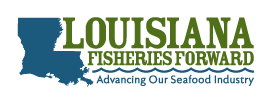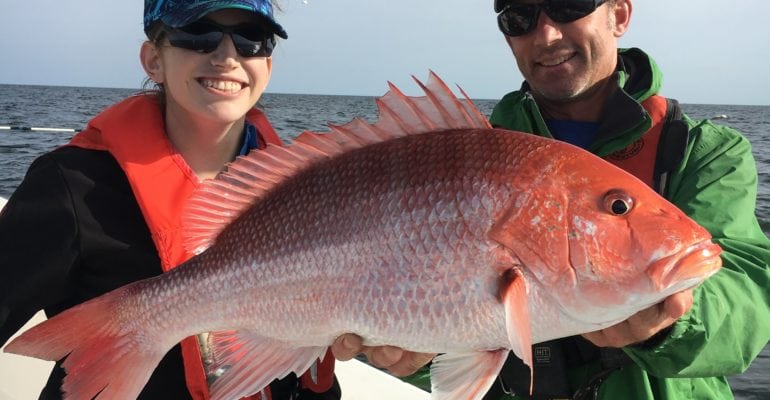The Gulf of Mexico Fishery Management Council met virtually on November 30 and December 1, 2020. The meeting began with a presentation from the NOAA Office of Atlantic Highly Migratory Species on its Draft Amendment 14, which considers creating a framework for establishing acceptable biological catch and annual catch limits for Atlantic shark fisheries. The Council was also presented with an update on ecosystem-based management efforts that can inform the development of a Gulf of Mexico Fishery Ecosystem Plan. This Plan will outline and provide direction for reaching the social, economic, and biological goals for the region.
The following is a brief overview of what was accomplished during the meeting:
Aquaculture. The Council heard a presentation from NOAA on its efforts to identify geographic areas appropriate for aquaculture, or “Aquaculture Opportunity Areas.” Such areas should allow for commercial aquaculture, while minimizing interference with other enterprises, account for current fishing patterns, and protect the ecosystem. The Council will send a letter to NOAA to highlight the value of using a fishery stakeholder advisory panel to assist in the process of identifying Aquaculture Opportunity Areas.
Reef Fish and Red Drum Status Determination Criteria. The Council heard a summary of public comment received on Reef Fish Amendment 48 and Red Drum Amendment 5, which considers defining maximum sustainable yield (MSY), maximum fishing mortality threshold (MFMT), minimum stock size threshold (MSST), and optimum yield (OY) for all managed stocks. These reference points are the basis for determining the health of each stock and are required under the Magnuson-Stevens Fishery Conservation and Management Act and National Standard 1 guidelines. The Council delayed final action on the document and requested more information on the benefits and drawbacks of setting status determination criteria for unassessed stocks using methods that rely on criteria for spawning potential ratio and fishing mortality.
Pilot Program to Evaluate Shrimping Effort Using a Standard Vessel Navigation System. The Council heard an overview of a pilot program that uses P-Sea WindPlot to collect shrimping effort data. Since the 3G network used by the cellular electronic logbooks (cELB) that currently collects shrimping effort data is being phased out, NOAA Fisheries and the shrimp industry are working to find the most cost effective, feasible replacement. The Council will send a letter to NOAA supporting the development, implementation, and funding of the P-Sea WindPlot program. The Council also plans to develop a white paper to explore the costs associated with expanding the number of shrimp vessels participating in the pilot program using P-Sea WindPlot. In the interim, the Southeast Fisheries Science Center will send a letter to federal shrimp permit holders asking them to keep the cELBs on their vessels so that data will still be stored from trips and then can be manually collected.
Red Snapper. The Great Red Snapper CountThe Council received a presentation on the preliminary results of “The Great Red Snapper Count” that involved the collaboration of 21 scientists and 12 institutions across the Gulf of Mexico. These scientists used novel approaches to estimate the absolute abundance of age 2+ red snapper Gulf-wide. The project estimates that there are 23,000,000 red snapper off Texas; 29,000,000 off Louisiana; 10,000,000 off Mississippi and Alabama; and 48,000,000 off Florida. It also showed that large fish are comparatively more abundant in the western Gulf than the eastern Gulf. These estimates of red snapper abundance are much higher than previously estimated through the Southeast Data, Assessment, and Review stock assessment process. The Council’s Scientific and Statistical Committee will review the NOAA Southeast Fisheries Science Center’s plan for integrating the results of the Great Red Snapper Count into an interim analysis for red snapper at its January 2021 meeting. The results of the integrated Great Red Snapper Count and interim analysis will be reviewed by the Scientific and Statistical Committee in March 2021. The Scientific and Statistical Committee is anticipated to complete the review of the study and recommend updated catch level recommendations to the Council for its April 2021 meeting.
Framework Action to Adjust State Recreational Red Snapper Catch LimitsThe Council reviewed a draft framework action that considers adjusting individual state private recreational red snapper catch limits. NOAA Fisheries has been using the federal Marine Recreational Information Program (MRIP) in concert with landings and effort data collected from Gulf state data collection programs to monitor private recreational red snapper seasons. Adjustments to the state-specific catch limits are being considered to account for the harvest monitoring programs used by each state. The Council will resume work on this document at its January 2021 meeting.
Gray Triggerfish. An interim analysis of gray triggerfish, using video surveys to estimate abundance, showed that the gray triggerfish stock size has been increasing, especially in the eastern Gulf, and that catch limits can be increased. The Council’s Scientific and Statistical Committee recommended increasing the gray triggerfish acceptable biological catch limit to 456,900 pounds whole weight, which allows the Council to increase the gray triggerfish annual catch limit. In an effort to realize potential increases in catch limits before the end of the 2021 recreational fishing season, the Council decided to address changes to the gray triggerfish acceptable biological catch, annual catch limits, and annual catch targets in a standalone document. The Council plans to take final action on this document at its January 2021 meeting. The Council is also considering modifications to the gray triggerfish recreational fixed closed seasons and will consider that action in a separate framework action that will also address changes to the vermilion snapper recreational bag limit.
Vermilion Snapper. The SEDAR 67 stock assessment of vermilion snapper determined that the stock is not overfished and is not experiencing overfishing. The assessment used updated recreational catch and effort estimates from the Marine Recreational Information Program’s Fishing Effort Survey. Based on the results of the assessment, the Council’s Scientific and Statistical Committee recommended increasing the vermilion snapper catch limits to reflect the new landings information. The Council worked on a draft framework action that considers increasing the vermilion snapper overfishing limit, acceptable biological catch, and annual catch limits. The Council also decided to consider increasing the recreational bag limit for vermilion snapper, including a 15-fish recreational bag limit, and eliminating the species-specific recreational bag limit, while retaining vermilion snapper as part of the 20-reef fish aggregate recreational bag limit. In order to allow catch limit changes to move ahead quickly, the Council decided to address the change in the recreational bag limit in the framework action that also considers gray triggerfish fixed closed seasons.
Lane Snapper. The most recent update assessment of lane snapper used catch and effort data from the Marine Recreational Information Program’s Fishing Effort Survey, and allows for a relative increase in the acceptable biological catch. The Council heard recommendations from its Reef Fish Advisory Panel and reviewed a draft framework action that considers modifying catch limits and an accountability measure for lane snapper. The Council chose a preferred alternative that would modify the lane snapper overfishing limit, acceptable biological catch, and annual catch limits based on the recommendation of the Scientific and Statistical Committee for 2020 and subsequent years from the updated yield projections, as presented to the SSC in March 2020. This would not set an annual catch target for lane snapper. The Council also selected a preferred alternative that would modify the in-season closure accountably measure, so that if the annual catch limit is met in a given year, harvest of lane snapper would be prohibited by the recreational and commercial sectors for the remainder of that fishing year. The Council plans to take final action on this document during its January 2021 meeting.





